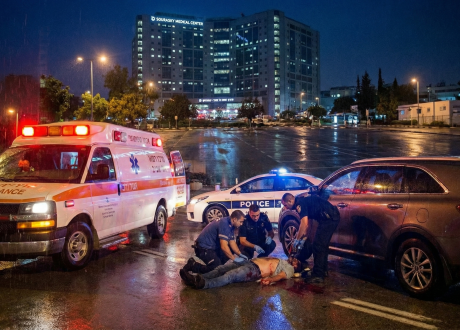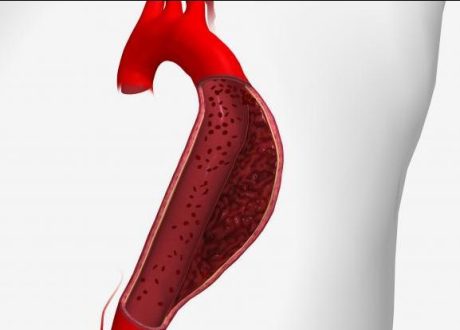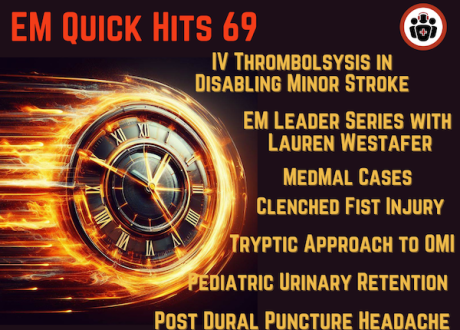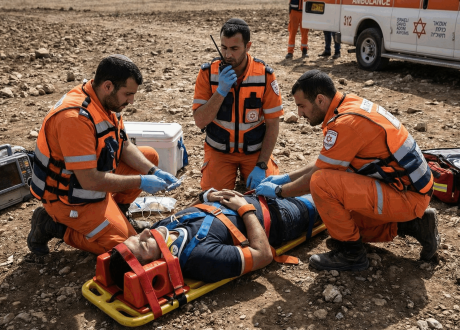Written by Clay Smith

A full-body CT protocol in resuscitated adults with out of hospital cardiac arrest (OHCA) more often – and more quickly – found the cause of arrest than standard of care CT but did not improve neurologically intact survival.
R2, fire up the scanner…or not
Yesterday we covered a retrospective study that found CT imaging post-OHCA often uncovered a wide variety of clinically important findings. And we covered full body CT post-arrest before. In yesterday’s study, imaging was at the discretion of the physician. Would a standardized full-body CT imaging approach be high yield?
CT FIRST was a prospective, pre/post cohort study comparing standard of care (SOC) for adult post-OHCA with SOC plus full body CT. The SOC group had 143 patients in which imaging decisions were at the discretion of the treatment team; 52% had selective CT imaging done. In the new cohort of 104 patients, a “sudden death CT (SDCT)” protocol was done in 100% and included head to pelvis imaging with contrast. They found the cause of arrest on CT in 92% of the SDCT cohort vs. 75% of the SOC cohort (p = 0.001). Time to diagnosis of the cause of OHCA was 3.1 hours in SDCT vs. 14.1 hours in SOC, p=0.0001. Delayed diagnosis (>6 hours) of critical findings was more common in the SOC group, 21/34 (62%), vs the SDCT group, 4/33 (12%), p=0.001.
However, survival to discharge was no different between the cohorts. In fact, neurologically intact survival was actually better in the SOC group, p=0.024. See below. Also, by chance, more patients in the SDCT group had bystander CPR.

How will this change my practice?
What I take home is similar to what Clark said in yesterday’s post. I will liberally use selective CT in post-arrest patients. But this study does not provide compelling evidence that a standardized full-body post-OHCA CT meaningfully impacts the most important patient outcome, neurologically intact survival.
Source
Diagnostic yield, safety, and outcomes of Head-to-pelvis sudden death CT imaging in post arrest care: The CT FIRST cohort study. Resuscitation. 2023 Jul;188:109785. doi: 10.1016/j.resuscitation.2023.109785. Epub 2023 Apr 3.









